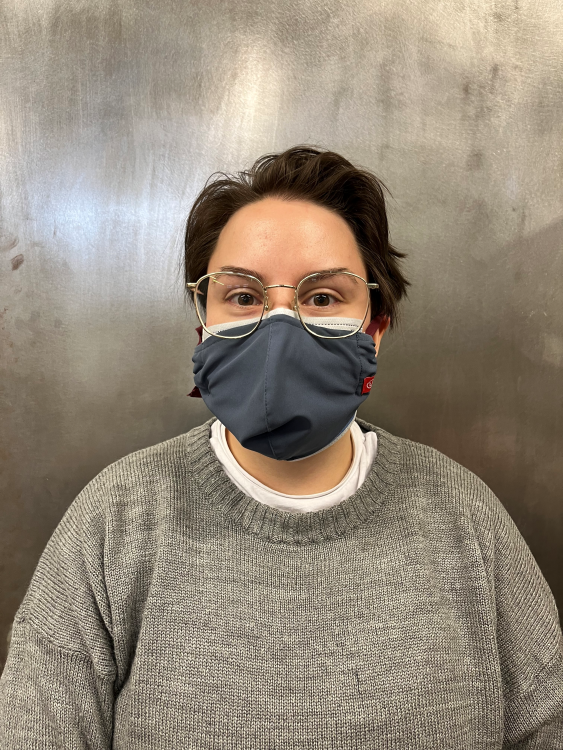
What We’ve Learned About Masks Since 2020
Share
New year, new variant - and a lot of new guidelines around masks to prevent Omicron transmission. We’ve got some updates for you about which masks to wear, and how your Unbelts cloth masks and filters fit into the new landscape.
Don’t have time to read the full post? Here’s the gist - wear an N95 if you can get your hands on one. If you can’t, wear a surgical mask *if* it fits close to your face with no gaps at all. If your surgical mask gapes at the sides, improve its fit by layering a well-fitting cloth mask over top. Alternatively, use a cloth mask with a filter inside.
Want to do the deep dive with us? Here we go:
Mask recommendations that have stayed the same:
- “Any type of general mask use is likely to decrease viral exposure and infection risk on a population level, in spite of imperfect fit and imperfect adherence.” (Professional and home-made face masks reduce exposure to respiratory infections among the general population. PloS one, 3(7), e2618)
- If a mask doesn’t fit, it doesn’t work. This is the design principle behind our masks (and all the accessories we’ve introduced, like brackets and optional earloops). It doesn’t matter how much filtration a mask offers if air can easily flow in and out through the sides. This is why we use adjustable behind-the-head straps, and why we offer four sizes, from preschooler to adult XL. You need a close fit over your nose and mouth, with no gaps at the chin or cheeks.
- Masks are just one tool in a larger toolbox of public health measures. Early on those other tools were primarily handwashing, social distancing, and staying home. Now they also include things like vaccination (yay, science!) and testing.
What’s changed:
- Omicron. A more transmissible variant has meant upping the measures taken to reduce spread - including upgrading to the highest-filtration face coverings.
- Government recommendations. Originally the messaging from public health officials was clear: medical-grade masks (especially N95s) needed to be reserved for healthcare workers. Late last month, however, Dr. Theresa Tam, Canada’s Chief Public Health Officer, said that if people have access to respirator masks (e.g. N95s) they should be wearing them - and that surgical masks are the second-best option. She stated that, at minimum, everyone should be wearing a two-layer mask, with a filter inserted for a third layer.
Where this leaves us (and you):
If you have access to a respirator mask (such as an N95 or KN95)? It’s your best option - wear it. (Not the kind with valves. Those let air flow freely, defeating the point and costing you bucks.)
What’s the difference between N95 and KN95 masks? Both types of respirator masks filter out 95% of particles in the air (0.3 microns in size) and have five layers of protection. The biggest difference is where they are certified. N95 masks meet a U.S. standard and are approved by the U.S. National Institute for Occupational Safety and Health (NIOSH). KN95s are manufactured in China and meet a Chinese certification standard. There are other respirators too - KF94 masks which meet Korean standards, and FFP2s that meet European standards. You can make sure your respirator is approved by Health Canada by checking that the approval number matches what’s listed on Health Canada’s website.
If your N95s are on backorder or they’re simply out of your budget, here’s what we’ve learned in terms of improving the efficacy of what you have at home:
Option 1: Insert a polypropylene filter into your existing 2-layer Unbelts (or other cloth) mask. This will create a 3-layer mask, in line with Health Canada's guidance for non-medical face coverings. We’ve worked hard to source the best filters for adult and kids’ masks, including these contour filters and preschool filters. You can also make your own out of polypropylene grocery bags if purchasing filters isn't an option for you right now.
Option 2: Layer your Unbelts mask over a surgical mask to eliminate the surgical mask’s gaps. Evidence shows that surgical masks offer increased protection - but they don’t fit everyone’s face. According to the CDC "A medical procedure mask can be layered underneath a cloth mask for improved fit and filtration."

We think it’s also worth mentioning that there’s been an increased acknowledgement that cloth masks break down over time. Repeated washing and drying decreases textile integrity - it’s true of t-shirts and undies, and it’s definitely true of masks.
If you’ve been wearing your cloth face coverings since 2020 and they’re starting to show their age (ie. light easily shines through them when you hold them to the sun), you’ll want to consider replacing them. If you need replacement Unbelts masks but they’re out of economic reach right now, apply for a donation here.
—----
On a personal note… do you remember the first time you wore a mask, way back in March or April 2020? I do. I put on my very first face covering before I braved a biweekly trip to the grocery store. It felt so surreal and momentous that I snapped a masked selfie, thinking I should document a scary but - I thought - very temporary time in history.
Almost two whole years later, and nothing about that #maskie (too late to make a hashtag happen?) is temporary. We’ve all been pushed to new limits of tenacity and bravery. We’re here with you. Our cloth masks aren’t meant to replace medical-grade PPE, but we’ll keep you informed of how to use them and other masks on the market to keep you as safe as we can.












